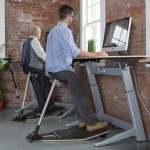If you’ve been interested in buying a 3D printer over the past couple of months, but never really managed to get one because you were unsure of what to look for and where to get it, worry not – we’ll be discussing precisely that. 3D printers have been around for quite some time now, but it wasn’t until recently that they became affordable enough for people to use them for residential purposes. 3D printing can be expensive, and getting the models right might be difficult the first couple of times, as learning how to 3D print can be a steep learning curve.
You can buy a 3D printer and 3D printer gear online relatively easy. With the many different brands available online, there’s a wide range of choices for every purpose. The right 3D printer model will depend on your needs, budget and ultimate goals. You’ll usually need to decide between several types of 3D printers, the most commonly used ones for residential purposes being: SLA (Stereolithography) and FDM (Fused Deposition Modeling).
FDM is the most commonly used 3D printing method for desktop printing. The method includes thermoplastic filament being heated and extruded via an extrusion head which deposits the molten plastic in specific X & Y coordinates while the building plate lowers the object layer by layer in the Z direction. This technique is a cost-effective way for product development and rapid prototyping in education sectors and small businesses, since it’s capable of producing robust parts quickly and reliably.
SLA printers on the other hand, create objects by exposing a layer of photosensitive liquid resin to a UV beam, hardening the resin and making it solid. Once a layer of resin has been swept by the laser and hardened, the building plate in the tank of the printer lowers down the thickness of a single layer, and the laser starts working on the next layer. The layers are built on top of each other, and once the object is complete, it needs to be rinsed with a solvent.
In order to buy the right 3D printer gear, you need to know what your ultimate goals are so that you can plan ahead. There’s no point in buying a small, budget desktop printer if you have bigger ambitions. However, you don’t want a printer that’s too big and costly, if you’re not going to make the most out of it as well. So you basically have to consider whether you’ll be building larger and better things as soon as you gain some experience, as well as whether you plan on experimenting with colours and materials.


